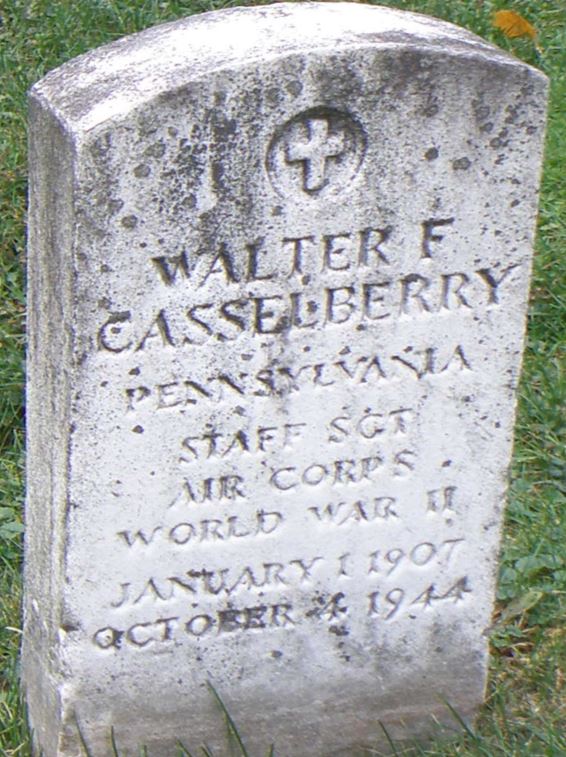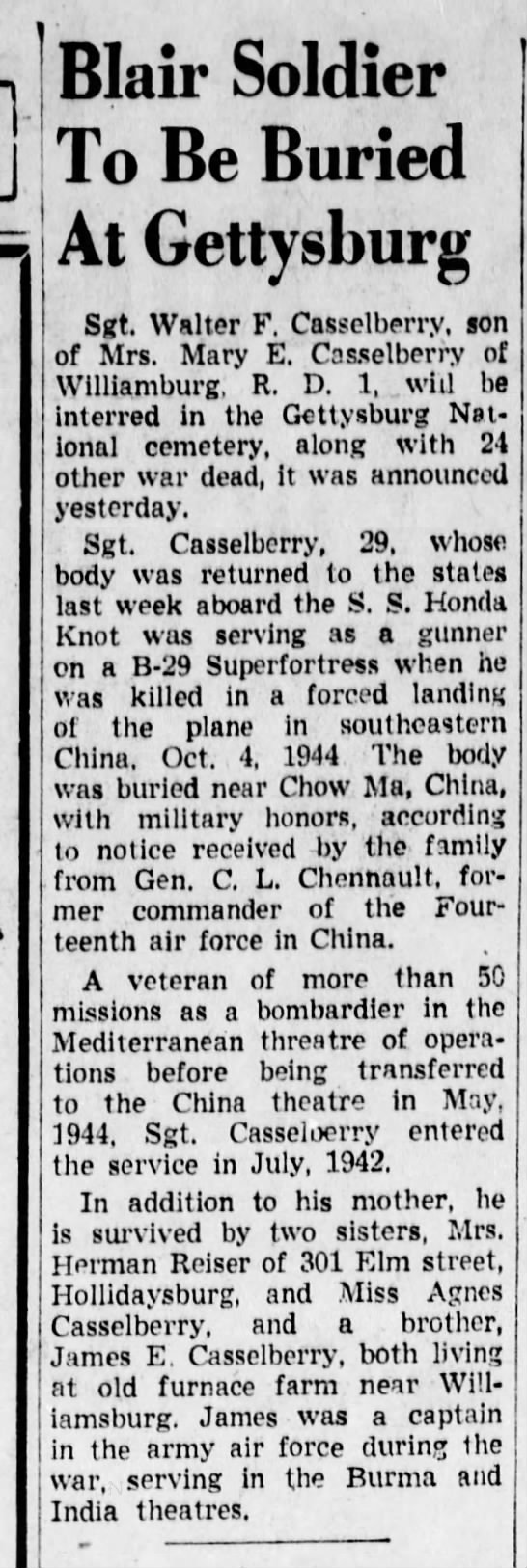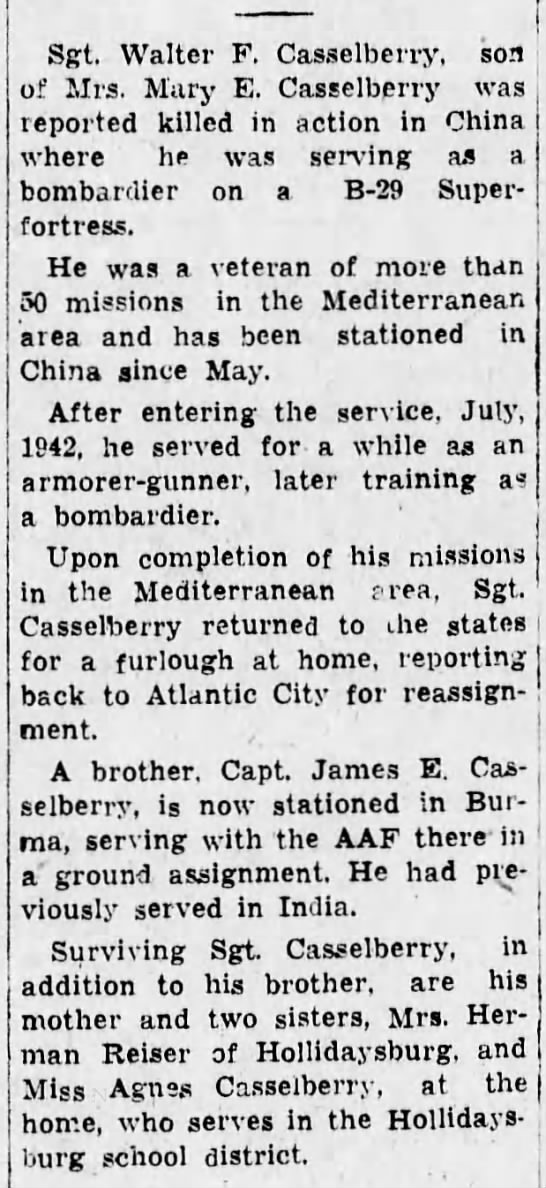T/Sgt. Walter F. Casselberry, #33247620. Williamsburg, Pennsylvania. Born January 1, 1907, died October 4, 1944.
T/Sgt. Casselberry entered service in July, 1942, with a high school education, and a background in poultry farming. He received training as both an armorer-gunner and a bombardier. After training, T/Sgt. Casselberry flew more than 50 missions--a very large count--in the Mediterranean theater. He is credited with at least one probable shoot-down of an enemy plane, a Messerschmitt Bf 109 about 60 miles off Trapani (Sicily, Italy), from a B-17. He also viewed horrifying events, including another B-17 in his group on a flight in August 1943 suffering a direct hit mid-air by flak, only one minute after landfall over Italy in a flight from Tunisia. T/Sgt. Casselberry saw the plane lose a 15-foot section of wing, which whipped by above his own plane, then go into a steep glide, trailing white smoke, and quickly crashing, with the plane's bomb load exploding. T/Sgt. Casselberry had seen no one bailout by parachute. Witnessing repeated events such as this, given his exceptionally high mission count, must have had a profound impact on him.
After spending December of 1943 furloughed at home, T/Sgt. Casselberry then reported for reassignment in Atlantic City.
Walter Casselberry eventually transferred to the China theater in May, 1944, presumably in part since his brother James L. Casselberry had been serving in India for about 15 months at that point, with the 7th Bombardment Group, 10th Air Force. Presumably the two brothers arranged for a few opportunities to cross path and catch up. Brother James was promoted to Captain in June 2, 1944, and later stationed in Burma.
T/Sgt. Casselberry continued to rapidly increase his already extraordinary mission count. On his final mission, T/Sgt. Walter F. Casselberry was most likely acting as gunner. This was a 'Snooper' mission of two specially fitted B-24s, which took off from Liuzhou late on October 3, 1944, and swept south China Sea and Straits of Formosa, searching for Japanese shipping. His plane, piloted by Lt. Destiche, eventually bombed a target on shore of Fujian province, near Xiamen (Amoy), then headed west back towards base.
During return, the plane had some kind of problem (not recorded), and Chinese spotters reported that the plane had crash-landed at at 24°05 N, 111°15 E (about 120 east of Liuzhou, and about 60 miles SE of Pingle) in the dark hours of the morning, at 5:30. US recon planes were sent to locate the crash. In the crash, six crew members survived, but three died in a crash, including T/Sgt. Casselberry:
- T/Sgt. Walter F. Casselberry
- Sgt. George A. Austermuhl (https://www.b24.net/aircrewAnames.htm)
- Cpl. Bernard C. Brown
The six survivors were returned to Liuzhou by 17:30 hours, October 9, 1944. The three deceased members were temporarily buried at Chow Ma, China, with full military honors.
Walter F. Casselberry was 29 years old at this death in 1944. After the war finished, in October, 1947, he was repatriated via the S. S. Honda Knot, and buried at Arlington Cemetery. His sister Agnes traveled to Washington to take part in the ceremony at Arlington.
(portrait image from the Altoona Mirror, October 16, 1947)


Altoona, Pennsylvania
17 Oct 1947, Fri • Page 2

Altoona, Pennsylvania
28 Oct 1944, Sat • Page 8
